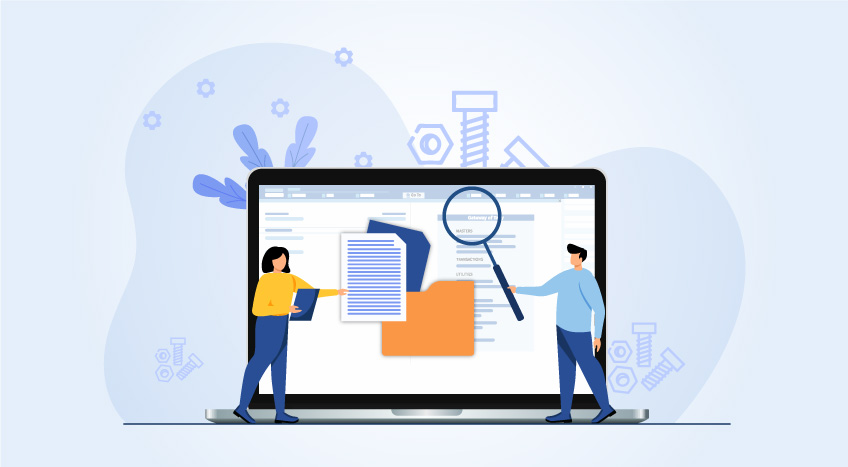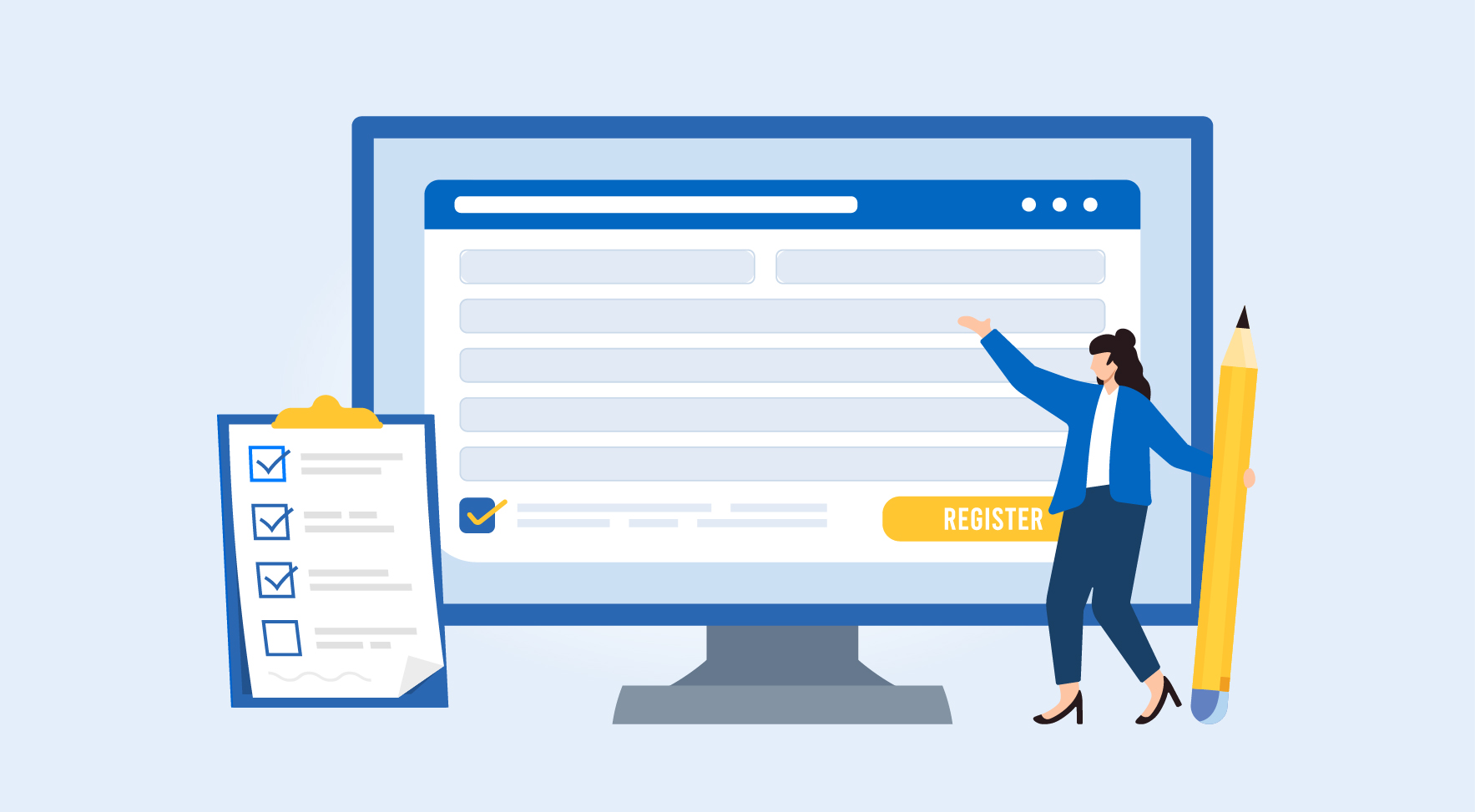Pramit Pratim Ghosh |Updated on: August 11, 2023
An e-way bill or electronic-way bill is a document introduced under the GST regime that needs to be generated before transporting or shipping goods worth more than INR 50,000 within state or inter-state. The physical copy of e-way bill must be present with the transporter or the person in charge of the conveyance and should include information such as goods, recipient, consignor and transporter. The e-way bill was rolled out nationwide on 1st April 2018.
E-way Bill FAQs
What is GST E-Way Bill?
Under GST, the process and procedural aspects for the movement of goods are prescribed in the e-way bill rules. E-way bill stands for Electronic Way Bill. It is usually a unique bill number generated for the specific consignment involving the movement of goods. However, it is to be noted that the e-way bill implementation was deferred when GST came into being on the 1st of July, in order to give more time to the government, businesses and transporters to prepare for its full and final implementation. States like Gujarat continued to have Form 402 in GST, and clear rules were laid down as to how to help businesses fill a GST Form 402 online till the implementation of the GST e-way bill is complete.
When is the E-Way Bill applicable?
It is applicable for any consignment value exceeding INR 50,000. Even in case of inward supply of goods from unregistered person, E-Way Bill is applicable.
When should the E-Way Bill be generated?
The E-Way Bill needs to be generated before the commencement of movement of goods.
What is the validity of E-Way Bill?
- Less than 200 KM: 1 day
- Every additional 200 Km or part thereof thereafter – 1 additional day
The validity period will be counted from the time of generation of the E-Way Bill. The validity period of the E-Way Bill may be extended by the commissioner for certain categories of goods, as specified in the notification issued in this regard.
Who should generate the E-Way Bill?
- When goods are transported by a registered person, either acting as a consignee or consignor in his own vehicle, hired vehicle, railways, by air or by vessel, the supplier or recipient of the goods should generate the E-Way Bill.
- When the goods are handed over to a transporter, the E-Way Bill should be generated by the transporter. In this case, the registered person should declare the details of the goods in a common portal.
- In case of inward supplies from an unregistered person, either the recipient of supply or the transporter should generate the E-Way Bill.
How to generate the E-Way Bill?
Form GST EWB-01 is an E-Way Bill form. It contains Part A, where the details of the goods are furnished, and Part B contains vehicle number.
Can E-Way Bill be generated for consignments of value less than INR 50,000?
Yes, either a registered person or a transporter can generate an E-Way Bill although it may not be mandatory.
What happens if multiple consignments are transported in one vehicle?
The transporter should generate a consolidated E-Way Bill in the Form GST EWB 02 and separately indicate the serial number of E-Way Bill for each of the consignment.
On generation of E-Way Bill, will there be any reference number generated?
Upon generation of the E-Way Bill, on the common portal, a unique E-Way Bill number called ‘EBN’ will be made available to the supplier, the recipient and the transporter.
What happens if goods are transferred from one vehicle to another vehicle in the course of transit?
Before transferring the goods to another vehicle and making any further movement of such goods, the transporter needs to update the details of conveyance in the E-Way Bill on the common portal in Form GST EWB 01.
Note: If goods are transported for a distance of less than ten kilometres within the State or Union territory from the place of business of the transporter finally to the place of business of the consignee, updating the details of conveyance in the E-Way Bill is not mandatory.
What happens if the consignor does not generate the E-Way Bill even though the value of consignment is more than INR 50,000?
The transporter has to generate the E-Way Bill in Form GST EWB 01 on the basis of the invoice, bill of supply or the delivery challan.
What happens if E-Way Bill is generated but goods are not transported?
The E-Way Bill can be cancelled electronically on the common portal within 24 hours of its generation. The E-Way Bill cannot be cancelled if it has been verified by an officer during transit.
Will the E-Way Bill be made available for acceptance to the recipient of goods?
Yes, the details of the E-Way Bill will be made available for the recipient of goods only if he is registered. The recipient of goods should communicate acceptance or rejection of the consignment covered by the E-Way Bill within 72 hours of the details being made available.
What happens if recipient of goods does not communicate the acceptance of rejection within 72 hours?
If the recipient of goods doesn’t communicate acceptance or rejection within 72 hours, it will be deemed as accepted by the recipient.
Is there a facility to generate or cancel the E-Way Bill through SMS?
The facility of generation and cancellation of E-Way Bill will be made available through SMS.
What happens if there is a mistake or wrong entry in the e-way bill?
If there is any incorrect information or a mistake in the e-way bill, then it cannot be corrected or edited. In case of any errors in the e-way bill, the only option is to cancel the e-way bill and generate a new e-way bill with correct details.
What must be done if the validity of the e-way bill expires due to vehicle breakdown or other circumstances?
The validity of the e-way bill can be extended under circumstance of exceptional nature, law and order issue, trans-shipment delay, accident of conveyance etc by updating the reason for extension and the details in Part B of Form GST EWB-01.
- E-Way Bill Registration
- E-Way Bill Generation
- Bulk E-Way Bill Generation
- E-Way Bill FAQs
- Consolidated E-way Bills
- E-Way Bill Verification
Documents, Inspection and Verification for E-Way Bill
The transporter or the person in charge of a conveyance should carry the following documents:
- The invoice or bill of supply or delivery challan, and
- A physical copy of the E-Way Bill or the E-Way Bill number.
At the place of verification, the officer may intercept any vehicle to verify the E-Way Bill or the E-Way Bill number in physical form for all interstate and intrastate movement of goods. On the ground of suspicion of tax evasion, a physical verification of the vehicle can be carried out by an officer after obtaining necessary approval from the commissioner or an officer authorized on his behalf. If the physical verification of vehicle is done at one place –within the state or in any other state, no further physical verification will be carried out again during the transit, unless specific information of tax evasion is made available subsequently.
After every inspection, the officer needs to record the details of the inspection of goods in Part A of Form GST EWB 03 within 24 hrs of inspection and the final report must be recorded in Part B of Form GST EWB 03 within 3 days of inspection. If the vehicle is detained for more than 30 minutes, the transporter has an option to complain by uploading the details in Form GST EWB 04.
What are the changes introduced in the e-way bills after e-Invoicing?
There will be no change in the process of generating e-way bills.
How To Generate E Way Bill From E Invoice Under The New System?
A user can use the following steps:
- Upload the invoice to the portal.
- After the GSTN has verified the mandatory information, the IRP will issue a unique invoice reference number and a QR code for the invoice.
- Section 12 of the e-invoice schema—e-way bill details—is where these data will be reported on the e-way bill portal. E-way bills are generated using the APIs from IRN.
- Post that, a user should sign in to the e-way bill portal and enter the invoice's IRN to create an e-way bill.
- If the necessary information is updated in the e-invoice, Parts A and B will automatically be filled out.
- Select "Submit."The electronic waybill will be generated if there are no errors, and it can be downloaded as a JSON or PDF file.
What is new update in e-way bill?
Businesses with cumulative annual turnover of Rs 10 crore and above need to generate e-invoicing for B2B transactions.
Do we need to generate e way bill after e invoice?
e-Way bill needs to be generated if the consignment value is above the e-way bill threshold. If your business is under the purview of e-invoicing, both need to be generated. The interesting part is that when invoice details are shared for generating e-invoices , the e-invoice portal automatically shares the details with the e-way bill portal as well. This ensures e-way bill is auto-generated. If you are using a connected solution, you can generate both together without the need to do it manually.
GST E-Way Bill Format
The E-Way Bill format in GST comprises of 2 parts – Part A and Part B.
The Part A of E-Way Bill in Form EWB 01 aims to collect the details of consignment, usually the invoice details. Accordingly, the following details need to be captured.
- GSTIN of Recipient: Mention the GSTIN number of the recipient.
- Place of Delivery: Here you must mention the Pin Code of the place where goods are delivered.
- Invoice or Challan Number: Mention the Invoice or Challan number against which the goods are supplied.
- Value of Goods: Mention the consignment value of goods.
- HSN Code:Enter the HSN code of goods which are transported. If your turnover is up to INR 5 crores, you need to mention the first 2 digits of HSN code. If it is more than INR 5 crores, 4 digits of HSN code are required.
- Reason for Transportation: The reason for transportation is pre-defined and you need to select the most appropriate option from the list.
- Transport Document Number: This indicates either one of the Goods Receipt Number, Railway Receipt Number, Airway Bill Number or Bill of Lading Number.
In Part B of Form EWB 01, the vehicle number in which goods are transported needs to be mentioned. This will be filed by the transporter in the common portal.
Explore More Products
Latest Blogs

Nuts & Bolts of Tally Filesystem: RangeTree

A Comprehensive Guide to UDYAM Payment Rules

UDYAM MSME Registration: Financial Boon for Small Businesses

Understanding UDYAM Registration: A Comprehensive Guide

MSME Payment Rule Changes from 1st April 2024: A Quick Guide

Are Your Suppliers Registered Under MSME (UDYAM)?

